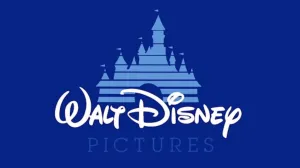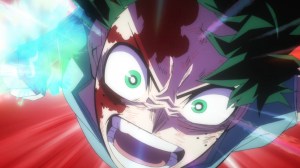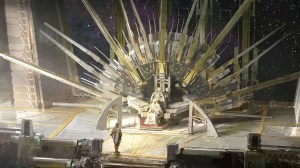Thanks in large part to the burgeoning slasher subgenre in the ’80s, movie studios realized audiences grew far more interested in seeing a villain carry out their carnage in follow-up films than focusing on the survivors of these ordeals, resulting in multiple burgeoning horror franchises. As time went on, studios got more creative with their approach to franchises and found all-new ways to initiate long-running mythologies with the horrors plaguing a film’s protagonists.
Videos by ComicBook.com
Earlier this year, Halloween proved there was still life in a franchise that launched 40 years ago, seemingly setting the series up for a revival. That film’s success has sparked discussions about how to bring various other franchises that have gone dormant back from the dead, potentially launching a wave of familiar villains heading back into theaters.
While there’s no official definition of what classifies a film as a franchise, we’ll be focusing on films that feature at least five installments (sorry to the Scream and Night of the Living Dead series), which in some cases also includes reboots.
Scroll down to see how some of the biggest franchise in horror stack up to one another!
10) ‘Saw’
The strength of the original Saw was in its seeming simplicity, which was revealed to be an overtly complex narrative. The merits of each entry can be debated, though the consistency at which they were churned out is an impressive feat.
The narrative of the overall franchise involves a man with a terminal illness who wants to remind people to appreciate the lives they have by forcing them to make a severe sacrifice if they want to live. After the man’s passing, various individuals took up the mantle, with the franchise ultimately delivering audiences dozens of deadly booby traps that forced viewers to confront how we would react in similar situations.
The prevailing constant throughout the franchise were its various horrifying traps, with the strengths and weaknesses in the series being the ways in which the narrative attempted to explain the motivations of the killers. Even if the narratives themselves didn’t resonate with you, the Saw series would release new entries every October for the better part of a decade, quickly amassing installments at an exciting rate and cementing itself in the annals of horror.
9) ‘Paranormal Activity’

Similar to the Saw series, the Paranormal Activity franchise relied on its quick turnaround and minimalist filmmaking to sink its hooks (figuratively) into the minds of horror fans as an iconic franchise.
The initial Paranormal Activity focused on a young couple who believed their home was haunted, resulting in them using a video camera to document their horrifying ordeal. Following films traveled forwards and backward in time to elaborate on the initial film, revealing that these occurrences were far from random.
While other franchises often utilize a familiar killer to strike fear into the hearts of viewers, Paranormal Activity merely relied on the concept of “ghosts,” which could make any susceptible audience member horrified to return home after witnessing the latest chapter in the series. The series has multiple disappointing entries, but even having nearly a 50/50 success rate is strong enough to stand out against the competition.
8) ‘Hellraiser’
Debuting at the end of the ’80s, some uninformed audiences might toss Hellraiser in with the decade’s various forgettable horror sagas, though anyone familiar with the series will know just how ambitious the mythology has gotten.
The defining face of the Hellraiser series is “Pinhead,” a demonic presence whose skull is embedded with nails. A slightly less intimidating constant in the franchise is a puzzle box, known as the Lament Configuration, which serves as a portal to another dimension.
The Hellraiser series has multiple horrifying installments and, for better or worse, the Lament Configuration allows the franchise to reinvent itself with each installment. Rather than having to try to explain an ongoing narrative, each film could potentially explore an all-new nightmarish scenario. Admittedly, many of these entries are far from stellar, but the film’s continuity is one of the more consistent thanks to its constant reinvention.
7) ‘The Texas Chainsaw Massacre’

Some of the best horror franchises might be able to maintain consistency to entertain audiences, though others rely on the strength of merely one or two installments to rise above the competition. The Texas Chainsaw Massacre is the latter.
The original 1974 film depicted a group of friends on a road trip who take one too many wrong turns and meet one too many nefarious strangers, ultimately resulting in their grisly deaths. Subsequent films explored the many other victims of a sadistic, cannibalistic family who often relied on the strength of one sibling and his proclivities for chainsaws to enact their mayhem.
The original Texas Chain Saw Massacre is an undisputed masterpiece of terror which is a go-to response for many horror fans in regards to the greatest horror film ever made. Follow-up films may have watered down the success of the original, though the strength of the core concept still managed to deliver audiences multiple compelling sequences within the series.
6) ‘Child’s Play’
After seven feature films, the Child’s Play series is next getting a reboot and a TV series, both of which will depict the terrors of a pint-sized threat.
The first film depicted a murderer injecting his spirit into a doll through a voodoo ritual, allowing him to extend his killer instinct in the toy as he sought a new host body. The killer Chucky went on to get married and have a child, all while delivering quips as sharp as his many bladed weapons.
What sets Child’s Play apart from virtually all franchises, horror or otherwise, is that the entire series has been written by Don Mancini, with the exception of the upcoming reboot. The slasher series might not be for everyone, but the franchise maintaining one unified vision over the course of 30 years is something to appreciate, even if you aren’t running to check out each entry.
5) ‘The Conjuring’

Similar to the success of the Hellraiser franchise and its opportunities for reinvention, the achievements of The Conjuring lay in its rich narrative that has allowed for both spinoffs and sequels of the original film.
Inspired by the case files of real-life paranormal investigators Ed and Lorraine Warren, the films in the proper Conjuring series deliver relatively straightforward haunted house films. What makes the franchise as a whole exciting is that these case files have allowed filmmakers to plant seeds of a number of horrifying premises, leading to spinoffs like Annabelle and The Nun.
The accomplishments of the spinoff films might not meet the Conjuring films, with the strength of the franchise instead being its flexibility and underlying potential. Much like the Marvel Cinematic Universe, the studio can deliver audiences a thrilling film, see what viewers connect most strongly with, and flesh that idea out into its own entire film. We might not see all of these horrors collide in a team-up adventure like superhero films, with the series taking a more “something for everyone” approach to horror.
4) ‘Final Destination’
The commonality between all horror film franchises is that they all ultimately involve death, to a degree, with various entries having vastly different body counts. The Final Destination series completely cuts out the creation of a compelling killer and instead uses the concept of death as its antagonist.
Each film begins with the depiction of an impressively horrifying event that leaves multiple bodies in its wake, whether it be a multi-car pileup on the highway or a bridge collapsing, only for one character to realize this sequence was just a vision of future events. That character then avoids their grisly demise, along with others who are roped into the escape along with them, before they realize fate has destined them to die.
Other franchises might satisfy an audiences’ bloodlust through various interpretations of brutality, with Final Destination‘s appeal coming from its Rube Goldberg-esque set of coincidences that leads to a character dying. Audiences have grown accustomed to yelling at characters in horror films to avoid going into a creepy house, yet the surprising nature of the Final Destination series regularly keeps viewers on their toes and, sadly, reminding us how close we are to death in our daily lives.
3) ‘Halloween’

The Halloween series is yet another franchise that can rely on the strengths of one installment to keep the overall average of a series ahead of the competition.
In 1978, the original Halloween depicted a murderer returning to his hometown to kill off one teenager at a time on Halloween night, with no clear method to his madness. Subsequent films then did attempt to rationalize the carnage to a mostly ineffective degree.
While the Halloween franchise features some undeniably awful experiences (Halloween: Resurrection, for example), the first film is such an accomplishment in cinema that it cancels out the shortcomings of multiple entries. The highs and the lows of the series are quite staggering, but the most recent chapter’s success could prove strong enough to grant the franchise enough momentum to make a massive comeback.
2) ‘Friday the 13th’
Enjoying one of the highest body counts of any cinematic franchise, the success of the Friday the 13th series lays in its simplicity, with the low points being the entries that got too ambitious in their narratives.
The franchise boils down to being about a child who drowned in a lake at summer camp while his counselors were too busy engaging in drinking, drugs, and promiscuous sex to notice his death, leading to the boy’s otherworldly return to kill those enjoying these activities.
The hockey mask-wearing Jason Voorhees is the iconic representation of Friday the 13th, though he didn’t even appear in this form until the third film. Some audiences take for granted the narrative twists the early entries in the series took, with fans still appreciating the first four films as being one of the most successful runs of horror sequels in history. The overall narrative of the series might often get muddied, yet the unstoppable nature of Jason Voorhees has delivered multiple memorable moments that are some of the all-time best in the slasher subgenre.
1) ‘A Nightmare on Elm Street’

In a crowded field of slashers featuring killers who would merely travel from Point A to Point B and murdered people along the way, A Nightmare on Elm Street borrowed established slasher tropes, took some supernatural liberties, and delivered audiences one of the greatest movie villains of all time with Freddy Krueger.
When a killer of children escapes sentencing due to a technicality, the parents of the community seek vigilante justice, burning Krueger alive. The murderer vows to harm the town’s children from beyond the grave, which he manages to do by invading their dreams to cause bodily harm, which is manifested in the real world.
Some killers relied on their lack of humanity to win over audiences, with Krueger’s disturbing sense of humor becoming the most compelling component of the franchise. Like all franchises, this series isn’t without its duds, but its consistency, thanks in large part to Robert Englund’s performance as Krueger, ensured that every installment was entertaining, even when they weren’t necessarily scary. Both Englund and creator Wes Craven have gone on to become icons in the genre, so it’s no surprise that their collaborative efforts are just as entertaining today as they were when the series debuted in 1984.








